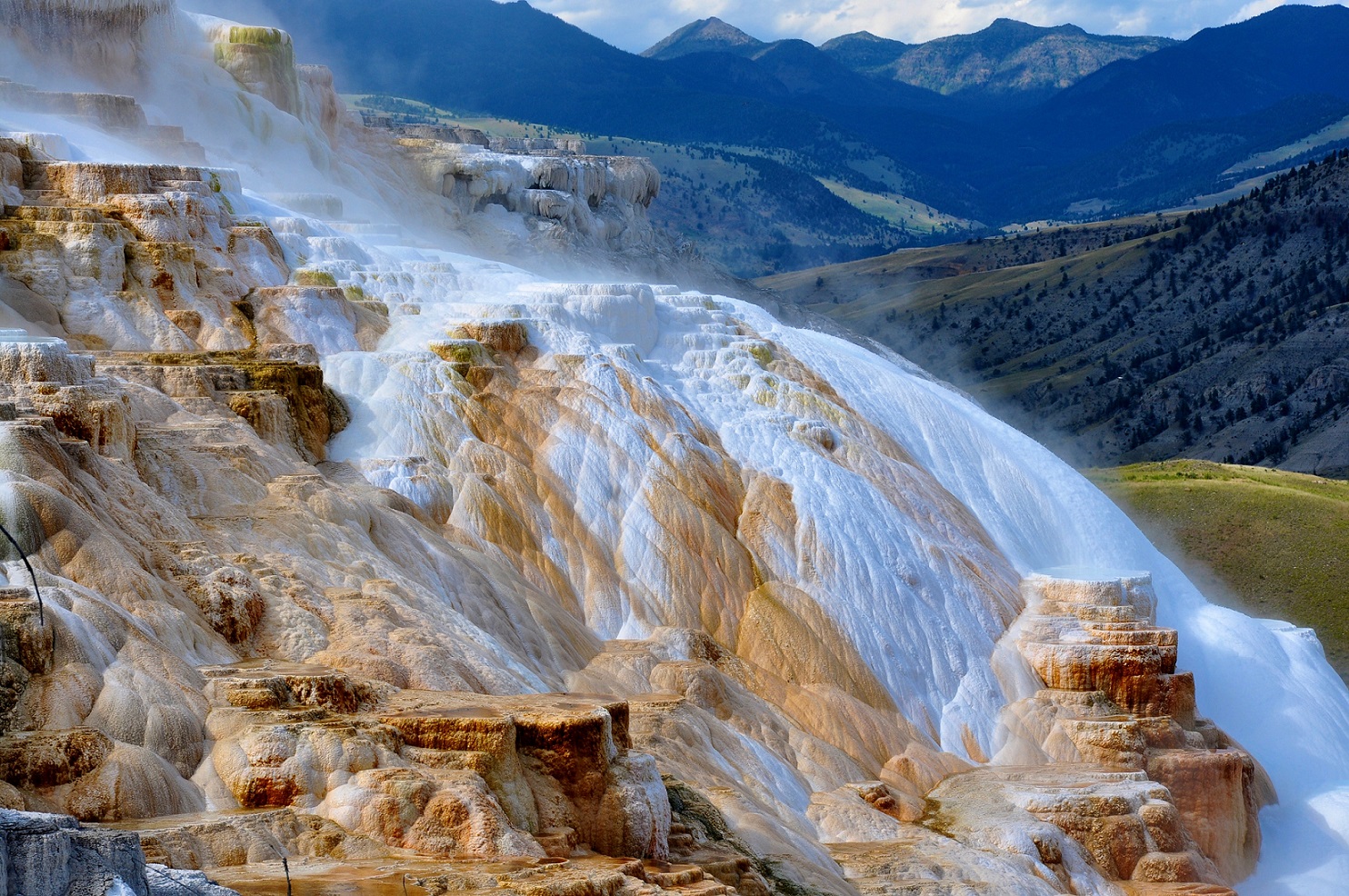Throwback Thursday: From the Vault
Mammoth Hot Springs is a popular tourist destination in Yellowstone National Park. Image courtesy of Todd Cravens.
This Saturday is National Public Lands Day, a day to celebrate the beauty and resources of our public lands and inspire environmental stewardship. Groups across the country are hosting work days to help maintain trails and clean up recreation areas. National Public Lands Day is also a fee-free day for all federal public lands and many state parks, an effort to encourage people to join in and visit their public lands.
This year, National Public Lands Day is special because the National Park Service is also celebrating its 100-year anniversary. Our national parks are often celebrated as our nation’s greatest idea, but these crown jewels are threatened by a $12-billion backlog in deferred maintenance projects – an amount five times higher than the Park Service’s annual appropriations from Congress.
In 1999, PERC economist and former chief economist of the Interior Department Richard Stroup lamented the challenges facing Yellowstone, the original national park. In a letter to the Bozeman Daily Chronicle he discussed how the park’s overabundance of visitors, crumbling roads, and lack of funding were not due to “incompetent bureaucrats” but instead came about as the result of misaligned incentives:
In almost every case, high-level leaders of government bureaus and agencies are smart, extremely hard-working, and tightly focused on their missions. They are among “the best and the brightest” in their fields. Yet bad results, like those we see in Yellowstone, are frequent.
Why? The answer lies in the signals they receive and the incentives they face. Consider the problem of deteriorating services. To reduce costs, Michael Finley closed the popular Norris Campground in 1996. Ironically, visitors were paying fees that more than paid to keep it open but the money went mostly to the U.S. Treasury, not to the park. The costs came out of Yellowstone’s budget, but the park did not receive the revenue. While the decision to close down a money-making campground to save money seems perverse, it was logical, given where the fees went.
There is another possible reason why the campground was closed, too. Analysts call it “the Washington Monument strategy.” Every bureaucracy in Washington plays this game in some form, usually during the early stage of the budget cycle. A bureau submits a budget to Congress, usually with a large increase built into it. The bureau threatens that if the budget is cut, important services will have to be dropped. In past years, the threat has been to cut back on the hours of service at the Washington Monument. The goal was to cause a public uproar so that Congress would be persuaded to keep the budget high.
The Washington Monument strategy is effective because of the way budgets are allocated. However, if popular parks were self-sufficient, that is if they had to rely on visitor fees for their budgets, and if they could keep those fees, management would not make such counterproductive decisions.
The solution is to make park management less political and more like private organizations, which can act independently of opinion polls when necessary. One way would be to create trusts to manage key portions of the park. The idea is that Congress would decide the goal of each trust and then appoint a board of directors, similar to the board of an art museum, to carry it out. Each director would be a recognized expert and, in fact, a zealot committed to the goal. The board would have to live within the budget it could raise from visitor fees and elsewhere, and would not depend on the political process for the budget.
Richard Stroup was onto something. Today, under the Federal Lands Recreation Enhancement Act (FLREA), 80 percent of fees collected within the National Park Service remain in the individual parks where they were collected, while the remaining revenue is used agency-wide at the discretion of the National Park Service. Congress still provides about 90 percent of national park funding, but fee revenues provide park managers with a small but reliable source of funding for deferred-maintenance and other projects.
Even if all fee revenues remained in national parks, the deferred-maintenance backlog continues to grow, and it is clear that congressional appropriations alone will not make up the difference. PERC has long been involved in public land issues, and we recently released Breaking the Backlog, a report exploring several creative ideas to address the backlog. Proposed reforms include:
-
Stop acquiring more land for the park system and start prioritizing the care and maintenance of existing lands
-
Dispose of unnecessary federal lands and use revenues to address the backlog
-
Harness public-private partnerships for infrastructure needs
-
Outsource routine park operations to the private sector while maintaining public ownership and oversight
As we celebrate National Public Lands Day, we can’t ignore the fact that the parks we love so dearly need help. Fortunately, there are ways to improve park management and address the critical maintenance needs that exist throughout the National Park System. But as Stroup discussed nearly 20 years ago, it would mean finding strategies to bring national parks closer to financial self-sufficiency, harnessing the forces of private enterprise, and making sure incentives are aligned in ways that will sustain and fund our parks into the future. The past century brought us national parks that preserve some of our most spectacular landscapes.Let’s work to ensure that these areas continue to be protected for the next one.
Check out more of our recent public lands research: https://www.perc.org/publiclands





